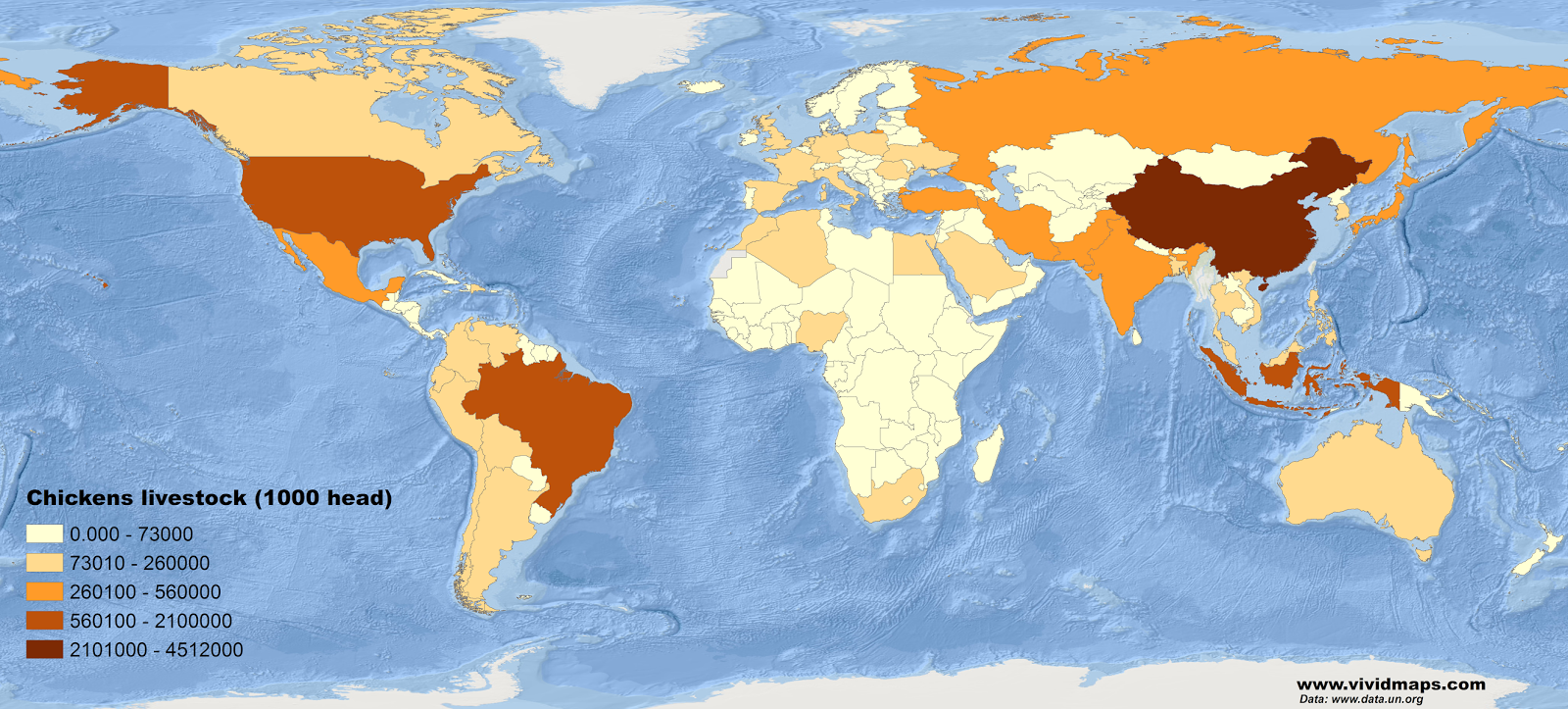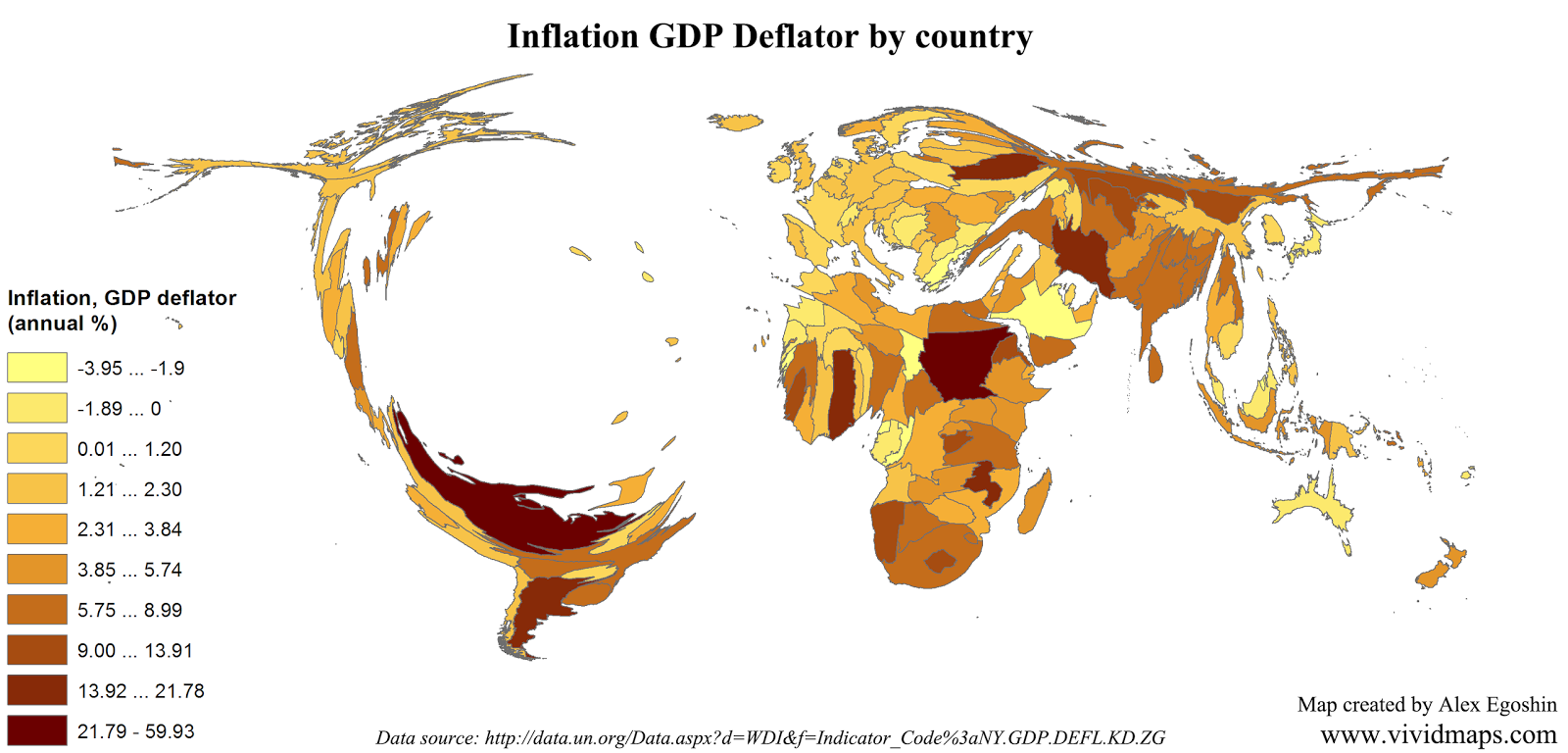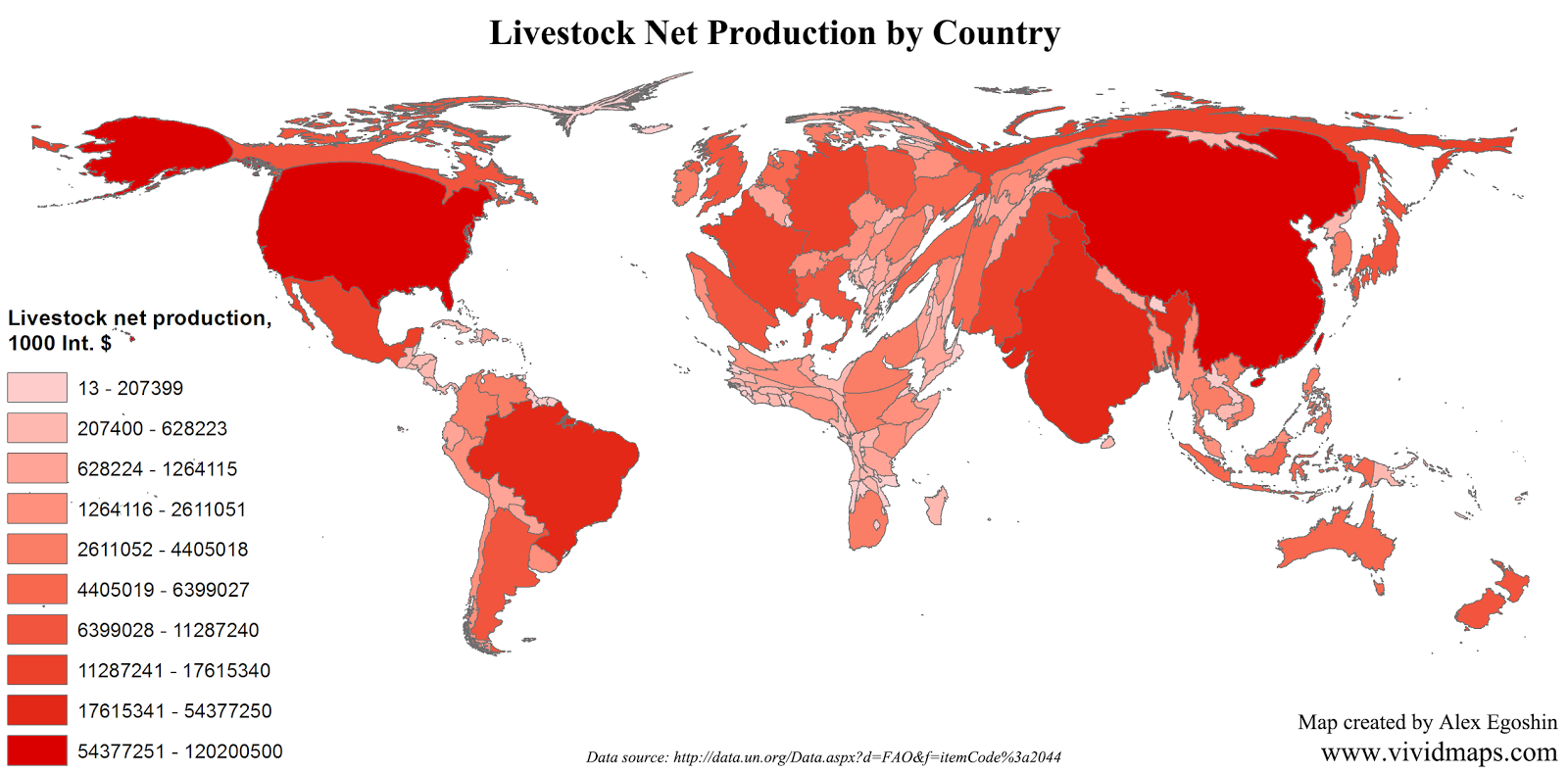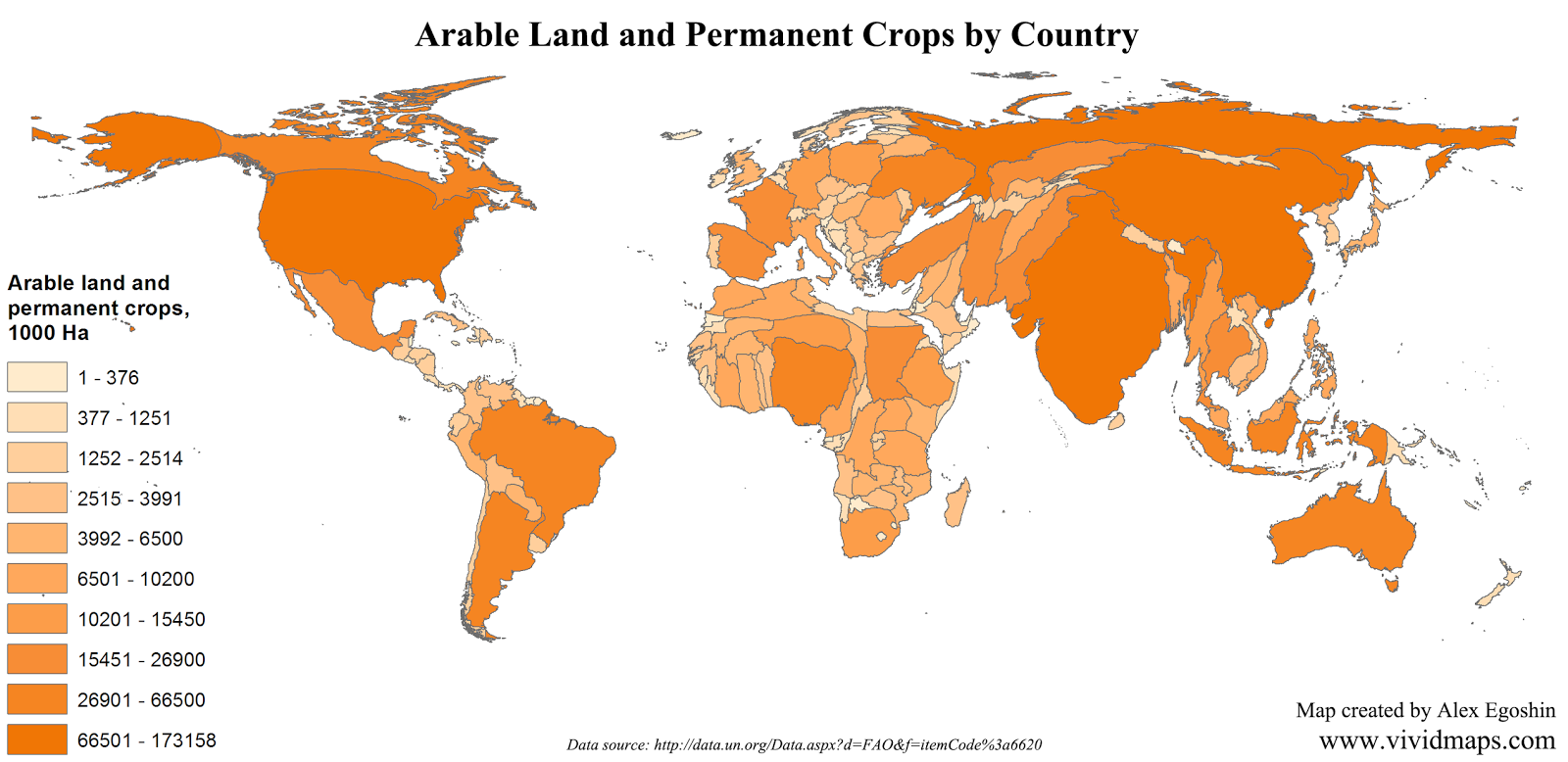The Tallest Skylines in Each Country
The origins of skyscrapers can be traced to the late 19th century, notably in Chicago, often referred to as the “birthplace of skyscrapers,” where the Home Insurance Building was constructed in 1885. While its ten-story height may appear modest by contemporary standards, this landmark marked a pivotal moment in architectural history by introducing innovative steel frame construction techniques that ushered in the era of vertical architecture.
Skyscrapers weren’t merely standalone structures; they frequently formed integral components of a grander, forward-thinking concept for vertical cities. Particularly in densely populated urban regions, they now play a crucial role in optimizing the utilization of constrained space, enabling the housing of thousands of individuals, offices, and amenities within a compact footprint.
However, skyscrapers transcended mere functionality and evolved into canvases for architectural creativity. Visionaries such as Frank Lloyd Wright, Ludwig Mies van der Rohe, and Frank Gehry pushed the boundaries with their artistic visions. Gehry’s Guggenheim Museum in Bilbao, Spain, stands as a masterpiece challenging convention with its titanium curves, while Adrian Smith’s Burj Khalifa in Dubai represents a symbol of modern elegance and innovation. These iconic designs played a pivotal role in shaping the architectural landscape and remain a source of inspiration, drawing visitors from across the globe.
Yet, however captivating or ingenious they may be, cities dominated by skyscrapers evoke mixed aesthetic opinions, as some contend that once-clear city skylines are now overwhelmed by towering structures. Conversely, others find value in the artistic aspects and the economic progress often associated with skyscrapers.
But which cities boast the tallest skylines worldwide? To find out, Buildworld analyzed SkyscraperPage.com data to rank the tallest skylines in the world and each country’s tallest skyline.
So, which cities boast the tallest skylines in the world? To uncover the answer, the Buildworld team conducted an analysis of SkyscraperPage.com data, ranking both the tallest skylines globally and the tallest skylines within each country.
Table of Contents
Key Findings
- Dubai (UAE) has the tallest skyline in the world, with an average height of 323.9 meters. (1062.7 feet)
- The world’s second-tallest skyline belongs to New York City (299.1 meters or 981.3 feet)
- China dominates the results with nine cities amongst the top 20 tallest skylines in the world, led by Shenzhen (296.1 meters or 971.5 feet)
The World’s Tallest Skylines
Presently, not every tall building merits the designation of a skyscraper. While the precise definition may differ, a consensus among most architects suggests that a minimum height of 150 meters (approximately 492 feet) is required for qualification. Whether classified as skyscrapers or not, building heights across the globe continue to reach new heights. In light of the average heights of their local skyscrapers, which cities can rightfully boast of having the tallest skylines?
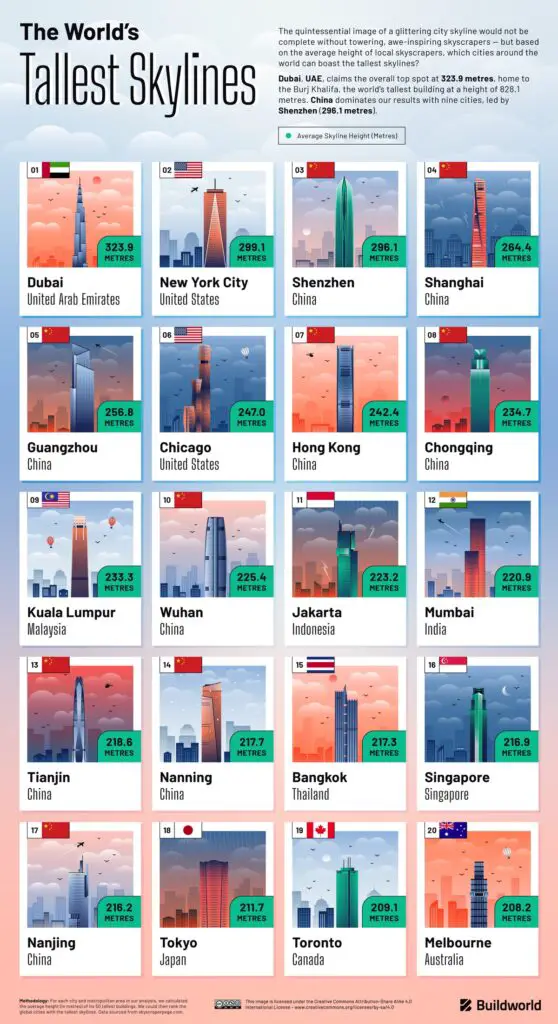
It may come as no surprise that Dubai, UAE, claims the title of the ultimate city in the clouds, boasting an average building height of 323.9 meters (1062.7 feet). This stunning skyline features architectural marvels like the twisting Cayan Tower, the graceful Princess Tower, and the iconic Burj Al Arab, resembling a billowing sail. However, the crown jewel is undeniably the Burj Khalifa, the world’s tallest building at an astonishing 828.1 meters (2716.9 feet), holding the record not only for the world’s tallest building but also the tallest structure (previously held by the KVLY-TV mast in Blanchard, North Dakota) and the tallest free-standing structure (previously held by Toronto’s CN Tower).
China dominates the rankings, with nine cities securing spots in the top 20, led by Shenzhen at 296.1 meters (971.5 feet). While Hong Kong boasts approximately 200 more skyscrapers, Shenzhen’s tallest building is a towering achievement in itself. The Ping An International Finance Centre, standing at 599.1 meters (1965.6 feet), ranks as the country’s second-tallest building and the world’s fifth-tallest skyscraper.
Interestingly, as of September 2020, the Council on Tall Buildings and Urban Habitat (CTBUH) reported a total of 81 unfinished skyscrapers in China, with construction suspended on some, and 66 expected never to be completed. This development might have contributed to China’s subsequent ban on “supertall skyscrapers,” which it imposed a year later.
The Tallest Skylines in Every Country
In today’s world, every nation boasts impressive skyscrapers that define its contemporary cityscape, from the iconic Burj Khalifa in the United Arab Emirates to the futuristic Shanghai Tower in China and the majestic One World Trade Center in the United States.
These awe-inspiring edifices serve as a testament to human creativity and engineering excellence while also acting as symbols of economic prosperity and urban advancement. However, the symbolism associated with skyscrapers remains a topic of spirited debate. Some argue that these “towers of power” reinforce capitalism and obstruct cityscape views.
Regardless of aesthetic perspectives, many countries take immense pride in their distinctive architectural marvels. So, the question remains: which city boasts the tallest skyline in each nation?
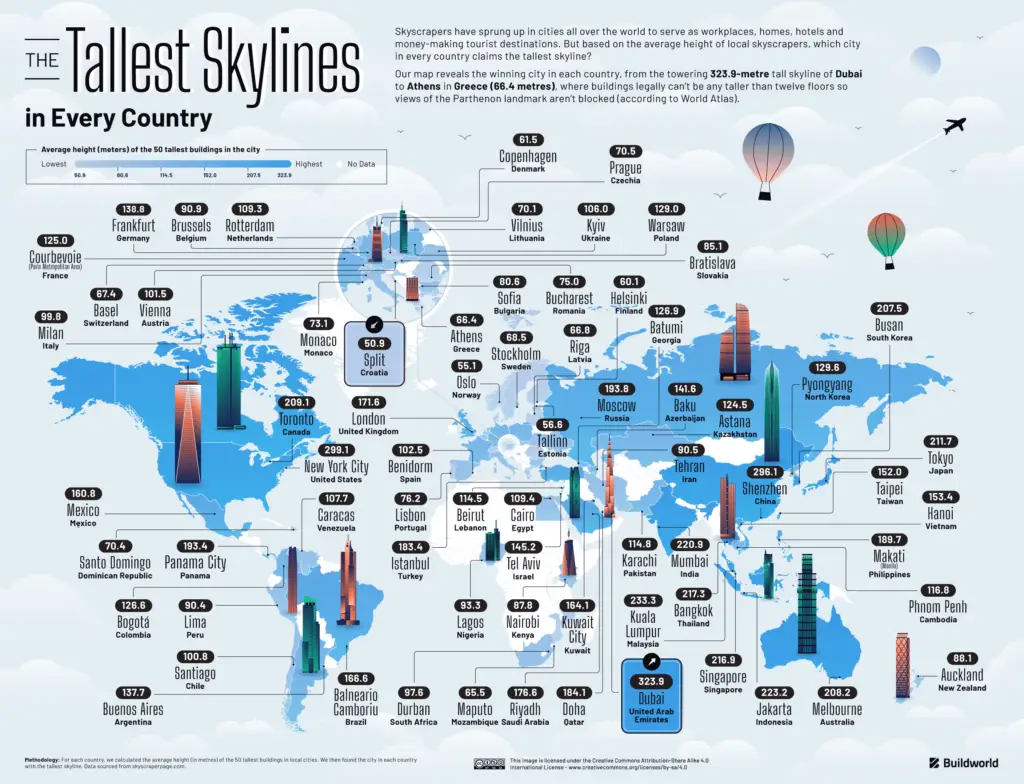
The world map above provides insight into the cities hosting the world’s tallest skylines in each country. Naturally, metropolises like Dubai, New York, and Shenzhen are among the standout contenders. Kuala Lumpur in Malaysia also secures a spot, boasting an average building height of 233.3 meters (765.4 feet). Notably, it was once home to the world’s tallest building, The Petronas Towers, a pair of 88-storey super-tall skyscrapers that held the global record until 2004, and remained Malaysia’s tallest buildings until 2019 when surpassed by The Exchange 106.
In addition, Toronto in Canada (209.1 meters or 686.0 feet), Melbourne in Australia (208.2 meters or 683.1 feet), and London in the UK (171.6 meters or 563.0 feet) all make notable appearances. Intriguingly, Athens in Greece (66.4 meters or 217.8 feet) also earns its place on the list, known for its height restriction policy that limits buildings to a maximum of twelve floors.
The Methodology Behind This Study
Buildworld’s analysis encompassed the heights, measured in meters, of over 109,000 skyscrapers and high-rise buildings located in cities and metropolitan areas worldwide. The information regarding these skyscrapers and high-rise buildings was sourced from skyscraperpage.com.
To determine the cities with the tallest skylines and identify the tallest skyline within each country, the team calculated the average height of the 50 tallest buildings in each city.
The final analysis excluded cities and locations with fewer than 20 skyscrapers or high-rise buildings. In instances where there were conflicting height measurements for a prominent tall building compared to official sources, the Buildworld team selected the highest measurement available, whether from skyscraperpage.com or another reputable source, taking into account the building’s tallest point, which may include spires or antennas.
Please note that the data for the research is accurate as of July 2023.


